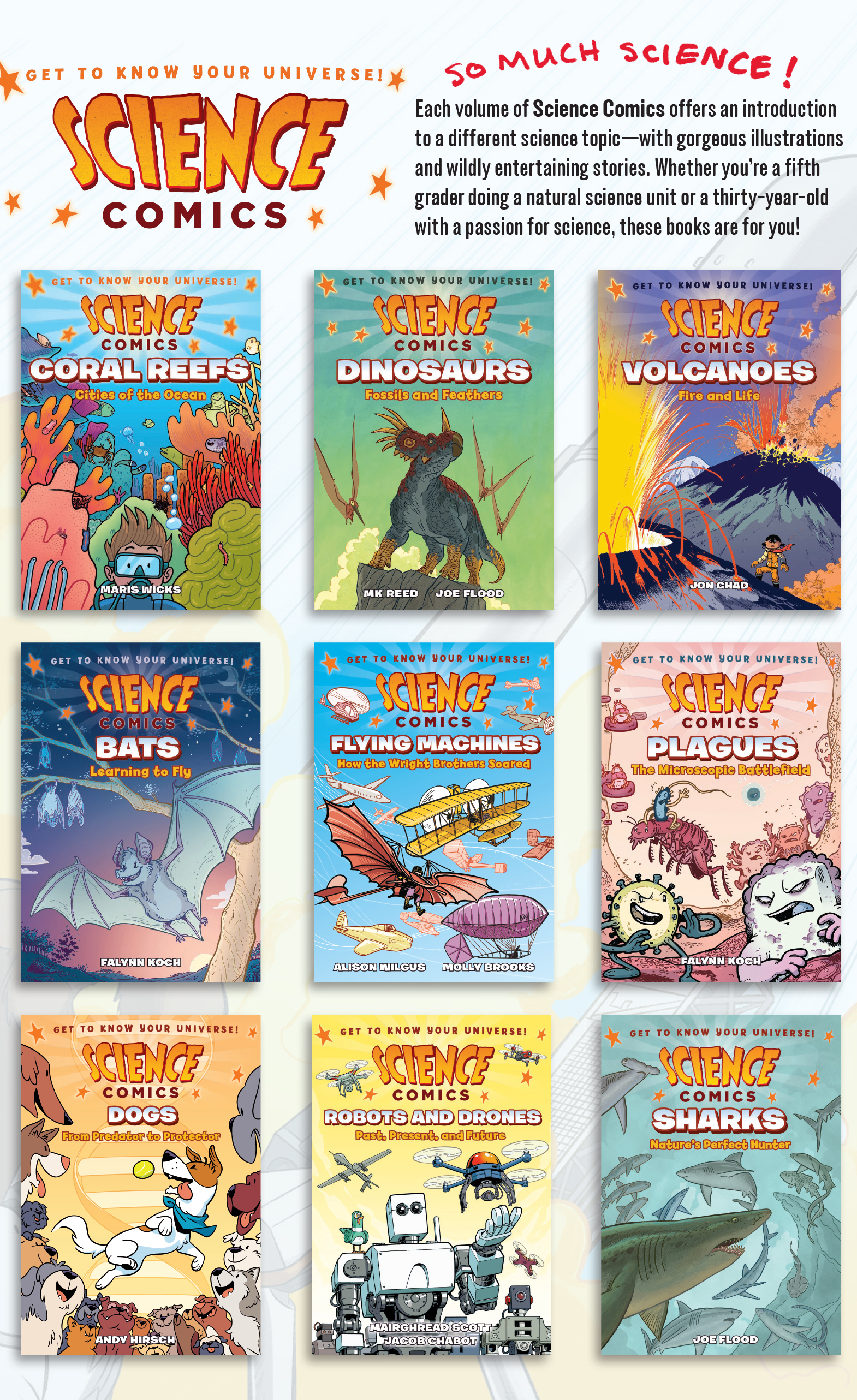Thank you First Second for setting up this blog tour with various creators of Science Comics. I am excited to be hosting Molly Brooks today.
What makes comics a particularly amazing format to tell science nonfiction in?
The combination of text and sequential visuals found in comics closely mimics the experience of having a teacher drawing diagrams on a blackboard, or walking the class through a practical experiment. The flexibility of being able to just SHOW things that are hard to describe, and to DESCRIBE things that are hard to visualize, means that complex scientific concepts can be explained without the reader feeling overwhelmed by information.
How did you do research to make your book?
I did some background reading on the time period, and spent a lot of time scouring the internet for old photos of the various people and locations discussed in the book. I also spent a lot of time going through youtube watching nerdy tourists' vacation videos from the historic Wright sites that have been preserved as museums—their childhood home, the interior of one of their bicycle shops—so that I could better understand the physical world they inhabited and interacted with. But the most important thing for me was accurately portraying how the various experimental flying machines operated. For that, I found the most useful resources to be modern replicas and scale models.
Tell us a little about the process of creating your book!
The thing that tripped me up over and over as I was illustrating this book was realizing that I didn't fully understand the thing I was trying to draw. I don't come from a science background, so if the script calls for a "diagram using an arrow to show air passing over the curved surface of a wing," I don't know enough off the top of my head to be sure about details like 1) how curved is it? 2) should I show air going underneath as well? 3) is the bottom of the wing curved concave, convex, or not at all? 4) should the arrow dip down or continue upward after passing the wing?, etc etc. I didn't even know enough to know whether those details mattered or not! It was really important to me that everything in the book be as accurate as i could make it, so i ended up taking a lot of detours and studying each of the basic concepts until i felt confident that i understood it well enough to explain clearly.
What's the toughest part of turning science research into a comic?
A lot of the work of cartooning and storytelling is knowing how to simplify images so that the important aspects are highlighted. The more I researched and learned interesting facts about early aviation, the more it started to feel like EVERY aspect was important, and it was hard not to pack ultimately irrelevant information into panels that needed to serve other storytelling purposes.
About Molly Brooks:
Molly Brooks is a highly-sophisticated disaster machine fueled by green tea and jelly beans. She grew up in Nashville, Tennessee, and is currently based in Brooklyn. She has a BFA in Communication Design from Washington University in St. Louis, and an MFA in Illustration as Visual Essay from the School of Visual Arts. Her illustrations have appeared in The Village Voice, Time Out New York, The Nashville Scene, The Riverfront Times,The Toast, BUST Magazine, ESPN social, Sports Illustrated online, and others. She spends her spare time watching vintage buddy cop shows and making comics about knitting, hockey, and/or feelings. Follow her on twitter | tumblr
First Science is excited to celebrate the power of science and nonfiction in children’s books with their award-winning series SCIENCE COMICS. Check out the other interviews with the authors—as we get excited about the wonder of science.
10/23 — Sharp Read
10/24 — Bluestocking Thinking
10/25 — YA Bibliophile
10/26 — The Reading Nook Reviews
10/27 — A to Z Book Reviews
10/30 — The Roarbots
10/31 — Undeniably Book Nerdy
11/1 — The Windy Pages
11/2 — Kid Lit Frenzy
11/3 — Ex Libris Kate





